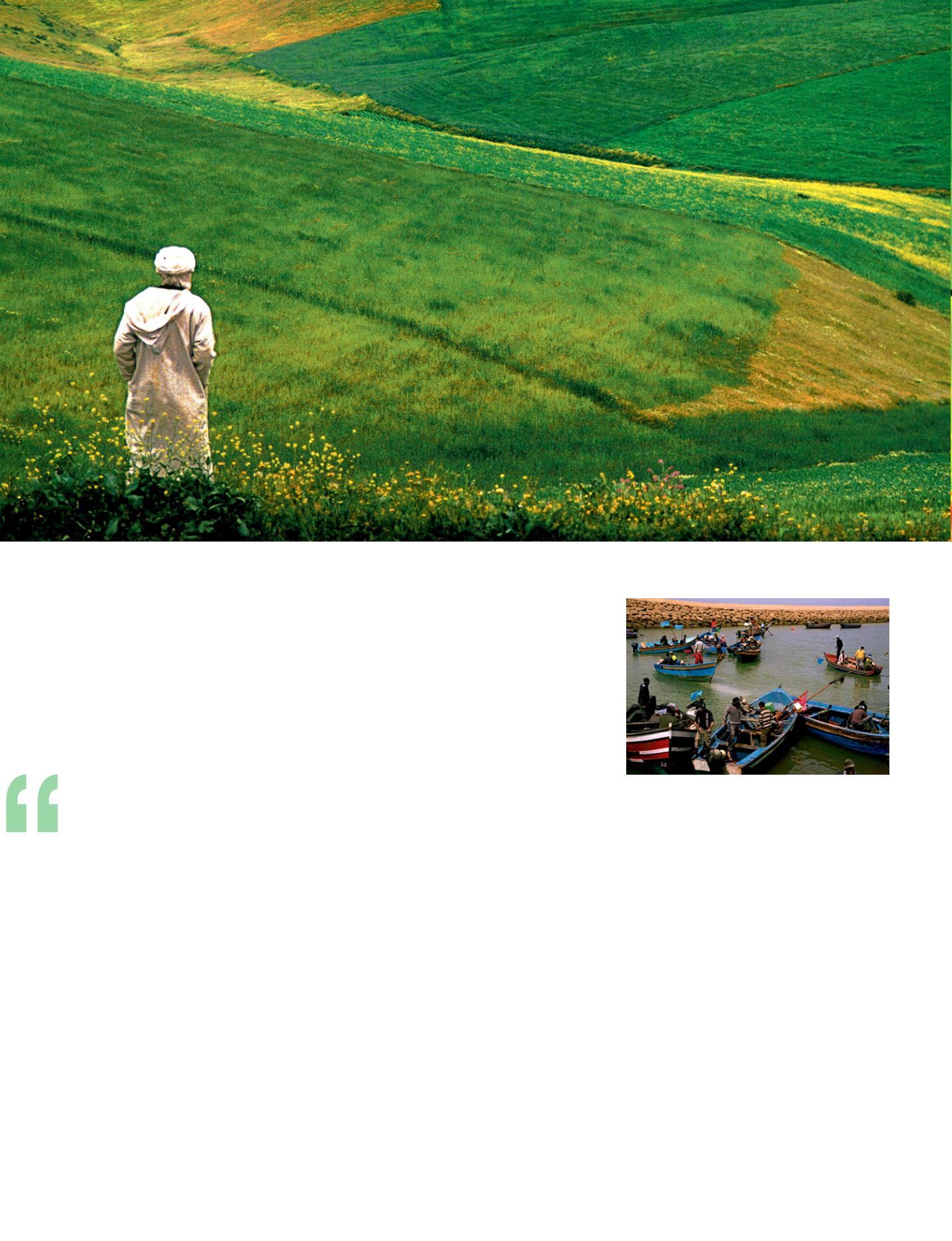
SaïdMouline
General Director of the National Agency of
Development for Renewable Energies and
Energy Efficiency
Rabat, Morocco.
What could be the basis for a joint policy
concerning
sustainable
development
between Morocco, Algeria and Tunisia?
T
he Maghreb countries share the
same Arab-Berber, Andalusian and
Jewish cultures and have the same
geographical context, with a Mediterranean
climate in the north and a very arid Saharan
zone. As regards the economies, each
country chose its own pathway in the 1960s:
with its energy resources, Algeria opted for
strongindustrialdevelopment,Tunisiaforthe
tertiary sector andMorocco used agriculture
and fisheries as a base. Rebalancing then
took place in the three countries.
As regards demography, the region has long
displayed strong growth: the population
of Morocco, Algeria and Tunisia increased
from 60 million in 1994 to 70 million in 2000.
Growth rates have decreased to more
acceptable levels, much more so than south
of the Sahara. In a context of increased
scarcity of fossil fuels, climate change,
accelerated desertification and exhaustion
of marine resources, the Maghreb countries
face the same challenges.
Is sustainable development one of the
priorities for the Maghreb?
Absolutely. We want to move towards
sustainable development. Even if you
often hear that ‘it’s a problem for the rich
countries and we should devote ourselves
to other priorities first’. But you always
win when the economic, social and
environmental aspects are integrated. An
example is that of non-responsible forest
exploitation. In Morocco, where today 98%
of the population is supplied with electricity,
20% of the energy used still comes
from firewood. This has environmental
consequences – deforestation aggravates
the silting up of reservoirs – and also social
effects: for a long time young girls could
not go to school because they had to carry
firewood, not to speak of carrying water.
A structuring Maghreb project would be a
joint green belt for the three countries that
would stop the spread of desertification.
What are the main challenges to be met?
The first is water. A true water civilisation
was born here and spread to Europe via
Al Andalus. Today, the decrease in rainfall
(resulting from climate change) worries us,
as does the salinisation of coastal ground
water (over-exploited by agriculture), soil
erosion and desertification. The desert is
advancing in the south. Water availability
is less than 1000 m
3
per person per year in
Morocco and 500 m
3
in Algeria and Tunisia.
Thanks to the dams built in the 1960s,
capacities in Morocco are sufficient to cover
consumption in towns and the country,
industry and agriculture. But the pollution
problems remain. Untreated sewage
is released into the sea by numerous
large cities in the Maghreb. Whence our
proposal within the framework of the Euro-
Mediterranean project that all the cities in
the South should be equipped with sewage
treatment facilities like those in the North.
The same goes for themanagement of solid
waste facilities. In these sectors we could
make progress in concrete projects that
would enhance Mediterranean integration.
What about agriculture and fisheries?
Moroccowishes to play a role in agricultural
development in Africa. It is not acceptable
Looking from the North
i
Spring in the corn area, near Khemisset (Morocco), between Rabat and Meknès.
© J.D Dallet/Suds-Concepts
i
The fishing port of Salé (Rabat, Morocco).
© J.D Dallet/Suds-Concepts
28 - Sustainable Development in Africa & Satellites


